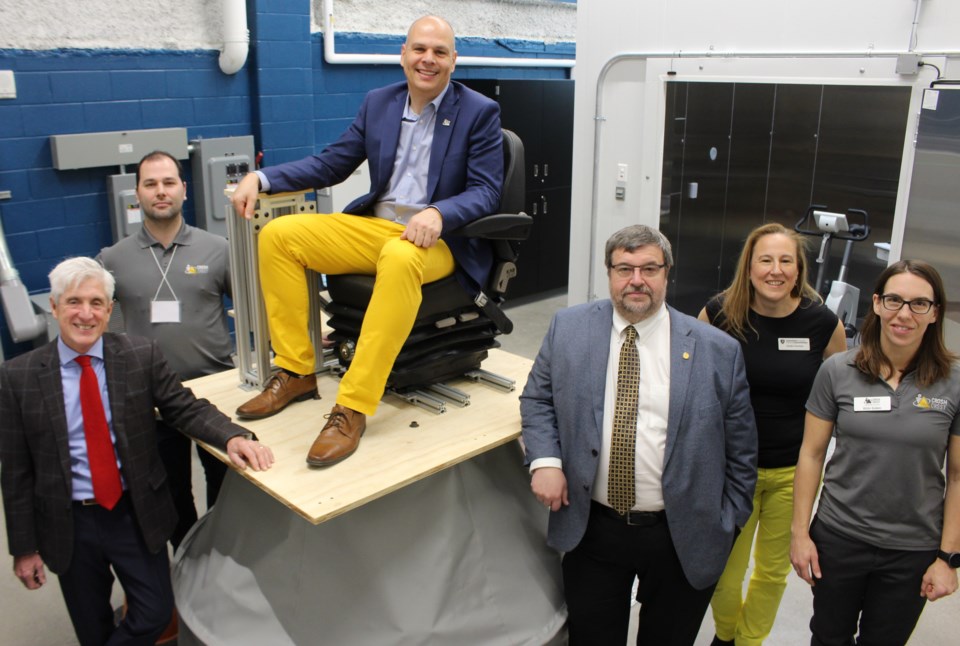Laurentian University's Centre for Research in Occupational Safety and Health (CROSH) in Sudbury hosted an open house demonstration of their new, fully operational Workplace Safety Simulator (W-SIM), Dec. 4.
In claiming it's the only one of its kind in North America, CROSH officials said the W-SIM can recreate almost any workplace environment in a controlled laboratory setting.
The simulator consists of different components that can work together or individually.
The robotic platform, or the rotopod, recreates the vibration and motion of equipment in the field. The user sits atop the platform in a chair, and the pod operates in six degrees of freedom, vibrating as if the operator were using their machine.
A separate, but related, piece of equipment is the environmental chamber that can be set to precise temperatures and humidity to replicate harsh working conditions.
The facility also features a VR (virtual reality) eye-tracker to simulate worker's surroundings, and a cardiorespiratory diagnostic system to measure human response.
“So on a railroad system, I can slide the vibration rotopod into the environmental chamber, and then I can put you in the VR world with an eye-tracker, and I can completely immerse you in the environment,” said Sandra Dorman, director of CROSH.
“I can set the temperature, the humidity, the movement you're being exposed to and also the visual effects.”
Want to read more stories about business in the North? Subscribe to our newsletter.
The W-SIM has been in development for about five years. Using their philosophy of “field to lab to field,” the centre understood the need to create a modern home lab.
Their mobile facility allows them to enter remote workplaces to identify and understand problems in a live setting.
CROSH considered industry needs in Northern Ontario, like heat and cold, mobile equipment hazards, and line-of-sight issues, when developing the technology.
The W-SIM allows researchers to solve real-world problems using work-task simulations. Possible applications include assessing different pieces of equipment for heat stress and vibration exposure, or testing an individual's fitness for duty.
CROSH was established in 2008 by Laurentian University to study occupational injury and disease and to innovate preventative solutions to maximize worker health and safety. Their goal is to fast-track real-world solutions for Northern Ontario industries.
CROSH collaborated with Vale to conduct a Mining Mental Health study that has had a large impact on the industry. They are also developing Knowledge Transfer Toolkits to share with mining, forestry, construction, pulp and paper, and steel manufacturing industries to facilitate education about the hazards of working with mobile equipment.




